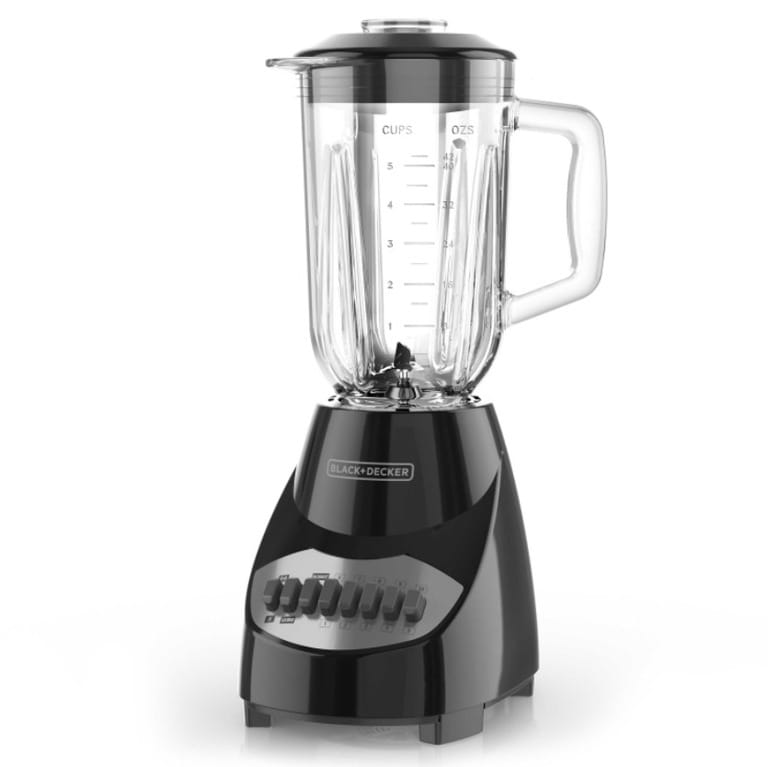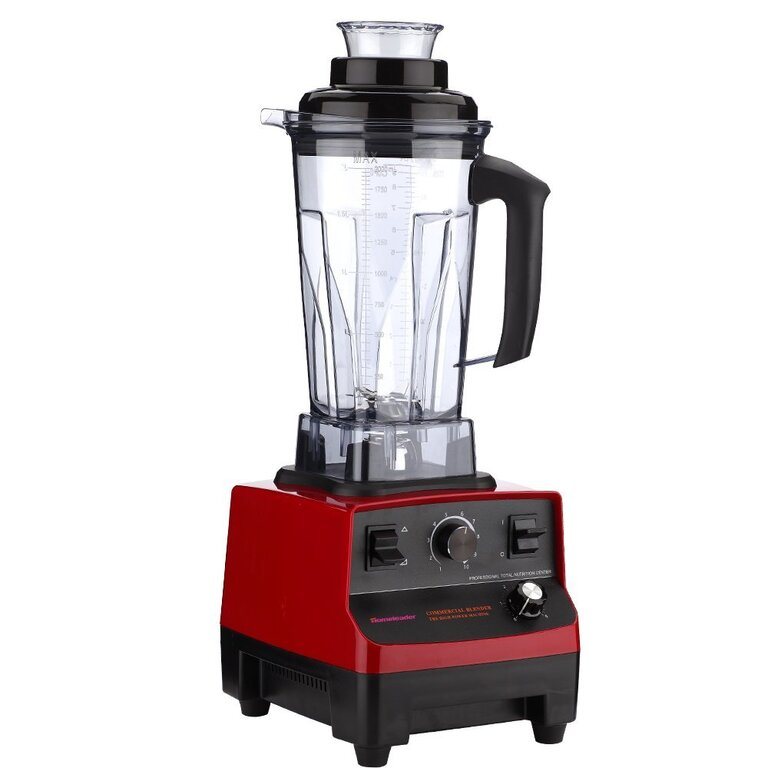Blenders are most commonly used to make smoothies, soups, and milkshakes, which can make delicious meals because of their ability to blend pastes like pesto and nut kinds of butter while some other products allow you to emulsify. mayonnaise and make aioli, can even be used to mix the dough.
There are many types available on the market, so How to choose a blender with guaranteed price and quality. Let's find out the information below.
1. Types of blenders
Countertop blender

This is a long-lasting and convenient kitchen appliance, it also offers plenty of speed and simple operation. They tend to be cheaper than high-performance blenders because of their less powerful performance.
Some people leave their blenders on the kitchen counter, so space is also a consideration. The base of the blender contains its motor. On the other hand, desktop blenders can have a large number of speed settings, ranging from slow, medium, fast, or super fast.
Immersion blender

An immersion blender will be inserted into what is the food you want to grind. So you can use the hand blender in a pot or pan, bowl. It mainly makes smoothies or pureed soups. However, this type of machine has a less powerful motor compared to the table-top version. Also, some immersion blenders are cordless and rechargeable, so you can stash them in the kitchen drawer.
Personal blender

These types of blenders usually only have 1 or 2 speeds. While they are not expensive, they are not a good alternative to a traditional desktop blender.
High-performance blender

This top-rated offers the features of a desktop blender but uses steroids. The difference between other blenders is they can process hard and soft ingredients, such as a blender that can grind wheat into flour.
For high-performance blender with powerful motors and high costs. The base of the blender is usually larger than that of a traditional desktop blender.
2. The place to put the blender
You can put the immersion blender anywhere. Almost all personal blenders are small enough to store in a cupboard.
For the average desktop blender and high-performance ones upgraded can create a problem. If the machine is too large to place on a kitchen countertop with upper cabinets.
The standard blender from counter to upper cabinets is 18 inches. Many desktop blenders can fit in this space. We make sure there is enough space for the blender you plan to buy.
3. Size of blender
All information mentioned about the "Capacity of the blender". The capacity will determine the number of ingredients that can be processed in the blender or container.
- Standard sizes: typically standard tabletop blender containers (called pitchers) hold 48 to 72 ounces. This will be preparing drinks for 6 to 9 people.
- High performance: it will be stronger and bigger. The high-performance blenders can hold up to 145 ounces.
- Individual servings: The personal blender holds only 8 to 20 ounces. It is not suitable for large families or you want to experiment in the kitchen.
4. Types of blades

You can choose the shape or design of the blender. Therefore you need to know that the brand only has two flat blades pointing upwards at the edge. Others may have four blades in an almost spiral shape. Even some blades are blunt, while others are very sharp.
Each blade design will give the device a different mixed personality. A better blade would be for grinding dry ingredients into powder. Other blade designs do a better job of pureeing food to create a uniform consistency. Most grinder blade configurations are multifunctional.
With stainless steel blades offer great performance and will resist corrosion. Besides, there are still some blender manufacturers that offer a carrying case with a removable blade because it is easier to clean.
5. Power of blender
Power range of blender:
- 300 watts: All basic desktop blenders offer this level of power. It can shred all but the most difficult ingredients. Blending won't be much of a problem.
- 500 to 700 watts: with power, this large blender can make soups and beyond liquids.
- More than 700 watts: This allows you to work with dry ingredients, can make your peanut butter, process cereals into flour. Especially can grind with a large number of ingredients.
6. Blender noise
Often a blade spins at 20,000 RPM or more, meaning they're spinning at up to 270 mph.
The combination of the motor, blade and processed food will produce a certain amount of noise.
Normal conversations occur at noise levels between 55 and 60 decibels (dB).
A food blender and other kitchen appliances only fluctuate at 88dB, the average blender is even louder. Continuous exposure to this level of sound can damage your ears after 8 hours.
For those high-performance machines, there are also quality materials to reduce noise. You should choose quiet blenders as the best way.
7. Blender's settings types
Some people like push-button blenders, others want precise control. The manufacturer has created two forms of an automatic and manual transmission.
For blenders, too, manufacturers give users the option to choose the speed and power for the blender.
Hence a blender with a bunch of speed knobs to provide convenience. High-end blenders come with sophisticated control interfaces. They depict exactly the type of food you want to grind.
Some high-end blenders turn usually automatic. You need to choose a smoothie, then choose the recipe that will create it using the optimal speed. What you need to consider is precise or manual speed control.
What's more, the blender has a variety of control panels and several feature buttons and switches, with dials or even touchpads. Even some blenders have digital displays.
8. How to clean the blender
Blender manufacturers all include dishwasher-safe containers and blades. However, not all dishwashers can accommodate large-capacity blenders.
You need to know the limitations of the dishwasher before buying a blender.
There are still some people who prefer to wash the blender jar by hand. But you should be careful with the blades. The high-performance blenders are self-cleaning. You just add water and liquid dish soap and let it run. Quick wash and done.
Online reviewers advise paying attention to the blender's ability to remove the blades. Pay attention to the exterior. You should always clean the container, blade, and lid. The rest of the blender needs to be cleaned from time to time. The blender base with a smooth surface and few cracks are easier to maintain.
9. Consider the cap's tightness

Some blender lids have a removable lid located in the center of the lid. It allows ingredients to be inserted while mixing, also helping to equalize the pressure that can build up as you prepare food.
10. Other things
Material and shape of the base
The blender has constructed a glass jar body that is heavier and breaks easily if dropped. Plastic jars are more common than glass ones but are more likely to stain with certain foods like turmeric.
As for square or round jars, some manufacturers design them in a way that allows ingredients to be distributed efficiently around the blender, but there are other factors such as blades and rotational forces. -torque) affects performance.
Pulse function

The pulse setting produces a short burst of power and is useful for small amounts of food, especially dry food, which helps with load distribution and uniformity.
Control and construction
You can push buttons, adjustable dials, or touchpads. Some sensors are easy to clean, but it's also a good idea to look for controls that are tightly sealed so food can't get in any crevices. The sturdy, heavy-duty base with a non-slip handle is convenient to keep the blender steady on the bench.
Chute

Choosing a larger trough will allow more ingredients while the blender is on, keep in mind that material may splash if you're adding liquid. Some blenders also have a push rod or lever that allows ingredients to be safely moved around inside the jar while the blender is running.
Conclusion
It's never been easier to experiment with new flavors and textures, and a blender will help you do just that.
With function, modern design will support you greatly with any kind of food. Through the above information, we hope you will understand how to choose the right blender through the suggestions above.













